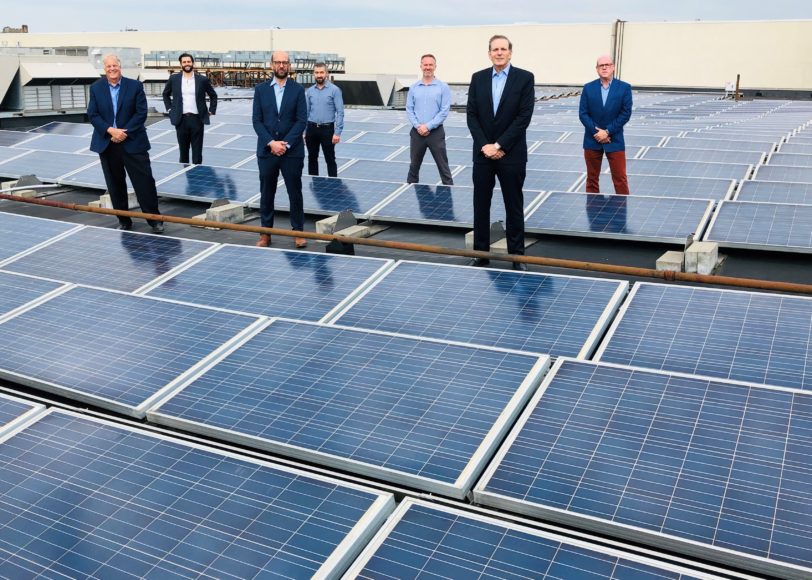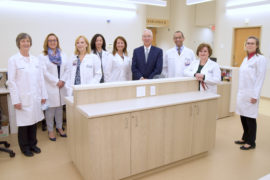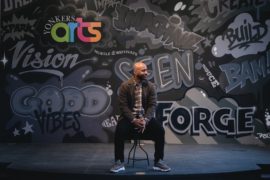While many municipalities across the United States are running for the solar energy train, Yonkers has been on board long before the train left the station. Back in May 2017, the city was recognized by the New York State Energy Research and Development Authority (NYSERDA) as a Designated Clean Energy Community and cited for providing training to employees on energy code enforcement, developing a standard solar permit application, investing in alternative fuel vehicles and infrastructure for its fleet and converting streetlights to energy-efficient LEDs.
While the city has encouraged developers of large-scale projects to make every effort to incorporate solar panels and other environmentally-friendly elements into their designs, it also has moved to make it easier for homeowners to add solar electric generation capability to their properties. The city has adopted the state’s Unified Solar Permit system, designed to cut through a lot of the red tape and expedite issuance of a combination building and electrical permit for small-scale photovoltaic installations capable of generating 12,000 watts of electricity or less. The permitting system promises that after submitting a complete application that meets standards, a homeowner can get the go-ahead for solar installations within 14 days.
This past April 28, Mayor Mike Spano announced that five Community Solar projects were coming to Yonkers. The city worked with nonprofits Sustainable Westchester and Groundwork Hudson Valley, solar developer G&S Solar and the Robert Martin Co. to bring solar power installations to buildings in Robert Martin’s South Westchester Executive Park.
The Community Solar program allows participating local area residents who don’t have their own solar systems to receive 10% discounts on their electric bills attributable to electricity generated by the Community Solar installations that’s fed into the utility grid.
“Renewable energy sources like solar continue to be on the rise in Yonkers and this Community Solar project leverages the city’s commitment to further greening our energy supply,” Spano said. “Thank you to Sustainable Westchester and our partners Robert Martin Co. and G&S Solar for supporting our efforts to build a more sustainable city while providing savings to Yonkers residents.”
The Community Solar launch followed the Yonkers City Council’s approved March 9 legislation that allowed the city to join Sustainable Westchester’s renewable electricity supply program, Westchester Power. Under Westchester Power, instead of buying electricity directly from a utility company, residential and small-business customers who wish to become part of a municipal buying group are able to purchase renewable-sourced electricity at a competitive fixed-rate. The program was established in 2016 and has grown to include more than two-dozen municipalities in Westchester County.
Back in 2009, Yonkers adopted the Climate Smart Communities Pledge designed to show that it had a commitment not only to reducing greenhouse gas emissions but also to recognizing that the climate was changing and preparations for the future were needed now.
In 2013, Yonkers began a massive program to replace all of the approximately 12,000 city-owned streetlights with high-efficiency LED (light emitting diode) lamps. fixtures and bulbs. It had cost the city $2.8 million to keep the old-fashioned streetlights lit during 2012, not including the cost of on-going repairs and maintenance performed by the Department of Public Works. While the switch to LEDs has reduced the city’s carbon footprint, it was also projected to produce savings in energy costs of $18 million over the first 10 years.
At a ceremony held to mark the beginning of the solar installations at South Westchester Executive Park, Greg Berger, president of Robert Martin Co., referred to comments attributed to inventor Thomas Alva Edison in 1931.
“I put my money on the sun and solar energy,” Berger quoted Edison telling automobile magnate Henry Ford and tire manufacturer Harvey Firestone. “What a great source of power,” Berger quoted Edison as saying.
Berger noted that 90 years later, the collective partnership in Yonkers is realizing Edison’s dream to harness the sun’s limitless, clean power.
“Robert Martin is excited and proud to be part of this venture and we look forward to help light the way towards Yonkers’ continuing economic revitalization with more critical solar installations in Yonkers and all over Westchester County,” Berger said.
“This is a bold, win-win solution for the city of Yonkers,” said Brigitte Griswold, executive director of Groundwork Hudson Valley. “Not only will it bring renewable energy to the city, but residents will also see a modest cost savings on electricity bills. We are especially proud to employ Yonkers youth(s) to lead our outreach and education efforts. (They) are already gaining valuable skills in the renewable energy field while earning a wage at a time when youth unemployment is at an all-time high.”
“Without this affordable green energy, our tenants would be at a loss,” said Wilson Kimball, president and CEO of the Municipal Housing Authority of the City of Yonkers (MHACY). “Having a green sustainable energy alternative is incredibly valuable to families and seniors who are literally concerned about the next dollar and the next five dollars that they spend.”
Kimball points out that about 200 of MHACY’s tenants who pay their own electric bills will see solar savings, while those tenants whose electricity costs are included in their rent will benefit indirectly.
Kimball (see sidebar) was one of those honored by Groundwork Hudson Valley at its “Here Comes the Sun” annual gala this past Oct. 14, celebrating the proliferation of solar electricity projects in Yonkers. With MHACY being is the second-largest housing authority in New York state, its interest in solar adds power to the cause of promoting the use of renewable energy.
Yonkers’ five-point environmental revitalization
1. Waterfront access
• A river esplanade now runs from Domino Foods to Yonkers Paddling & Rowing Club and will eventually extend north to JFK Marina and Park in front of new developments north of the Beczak Environmental Education Center Inc.
2. New greenway rail trail
• In collaboration with Groundwork Hudson Valley, the city is building a two-mile greenway along the old Putnam Rail Spur that formerly ran from Van Cortlandt Park to Getty Square.
3. Leading the way on recycling
• The city launched polystyrene foam recycling in 2014.
• An organic yard waste collection site opened in 2012.
4. Carbon footprint reduction
• Yonkers is the first city in New York state to convert its city lights completely to LED bulbs.
• It’s the first city in New York to launch a zero-emission shared electric scooter program.
• It’s the first city in the country to power a park solely on wind and solar energy.
5. Environmental restoration
• Under Mayor Mike Spano, the state Department of Environmental Conservation has issued certificates of completion for the remediation of 75 acres of contaminated brownfields in Yonkers. – Supplied by the city of Yonkers
About Wilson Kimball
Much of the planning expertise that helped guide Yonkers through its economic and development renaissance came from Wilson Kimball. Now president and CEO of the Municipal Housing Authority of the City of Yonkers (MHACY), she served as the city’s commissioner of planning and development from 2013 to 2020. She helped attract approximately $4 billion in new development and was instrumental in ensuring that each proposal was thoroughly reviewed.
Under her planning leadership, Yonkers received 26 grants that added up to more than $207 million to be used for crucial capital projects.
In April 2020, her appointment as president and CEO of MHACY was announced. Under her stewardship, the agency has been renovating and expanding its housing stock, so that every MHACY resident can enjoy a pristine, safe and modern place to live.
Prior to joining the city, Kimball was senior vice president of operations for the Hugh L. Carey Battery Park City Authority in New York City, a community created where deteriorating piers once stood on the Lower West Side of Manhattan in the Hudson River. A partnership between the authority and private developers resulted in creation of a planned community that many cite as a prime example of successful urban development.
Kimball also served as chief of staff for Libby Pataki, wife of Gov. George Pataki, when she was first lady of New York state. Kimball worked with Mrs. Pataki in writing the children’s books ”Artfully Taught” and ”NYC ABC,” and edited ”Letters to New York: Children Speak Out.”
Kimball earned a bachelor’s degree in government from Skidmore College and a master’s from Pace University Lubin School of Business. She received her law degree from Fordham University’s School of Law, where she was named Stein Scholar and editor of the International Law Journal.
For more, visit mhacy.org.




